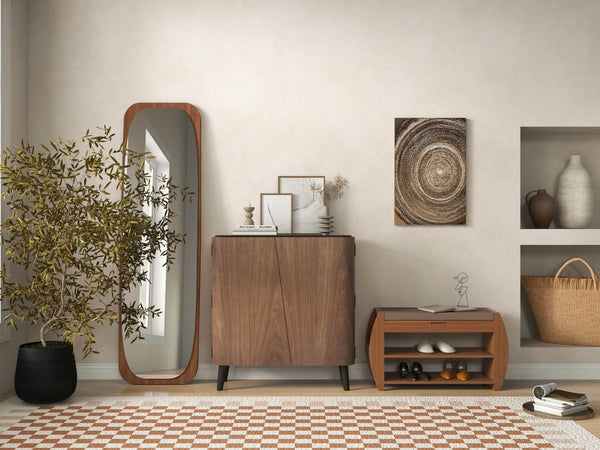
Japandi Style: Unveiling the Fusion of East and West in Interior Design
While it might give the impression of a trendy buzzword, Japandi style in interior design is far from a recent fad. It represents a harmonious fusion of Japanese and Scandinavian interior design traditions, both of which have rich histories spanning centuries. Emphasing that the cultural connection between Japan and Scandinavia has deep historical roots. Despite its focus on tranquil, minimalist, and functional interiors, this aesthetic extends beyond mere visual elements. This design style and its underlying principles genuinely promote a healthy and meaningful lifestyle. It encourages us to appreciate the beauty in imperfections, establish profound connections with the earth and nature, and savor life's simple pleasures..
Japandi Style Living Room

What is Japandi Styling?
At its core, Japandi style represents a fusion of Scandinavian and Japanese design philosophies. It's essentially an East-meets-West design movement that combines Japanese artistic elements and the wabi-sabi philosophy with the comfort and warmth, often referred to as "hygge," of Scandinavian design. Both Japanese and Scandinavian design traditions share common principles, emphasizing simplicity, natural elements, comfort, and sustainability.
In general, Japandi interior design incorporates neutral colors, utilizes high-quality and natural materials, and places a strong emphasis on greenery and nature. The love for nature and the desire to bring it into one's living space are shared attributes in both Japanese and Scandinavian cultures. This is reflected not only in the use of natural materials such as wood and linen but also in the incorporation of organic shapes and the harmonious blending of various forms.
Japandi Style Hallway

How Did Janpandi Come About?
Following Japan's closed-border policy, which spanned for approximately two centuries, Japan opened its borders in the mid-1850s. This policy shift marked a significant moment in the country's history. Scandinavian designers and artists seized the opportunity to explore Japan and its culture. They were deeply captivated by the Japanese style and found inspiration in the country's culture, as well as the remarkable items they encountered in Japanese shops.
The exposure to Japanese aesthetics and design principles left an indelible mark on many artists and designers in Scandinavia. This cross-cultural exchange laid the foundation for what we now recognize as Japandi style, a fusion of Japanese and Scandinavian design sensibilities, characterized by simplicity, natural elements, and a focus on functionality and aesthetics.
Simply Japandi

Is Japandi Still In Style?
Japandi style is not out of fashion, and in fact, it remains quite popular, with some even suggesting it has gained more prominence in recent times. It solidified its place in the design world in early 2022, making it particularly relevant. While many interior design styles come and go, Japandi's longevity and continued appeal indicate that it is likely to remain a relevant and enduring design choice.
However, even if Japandi were to fall out of favor in the future, it's essential to prioritize your personal preferences and create a home environment that suits your taste. Personally, I think a space, especially your own home, should feel good for you. Ultimately, the most important aspect of home design is that it resonates with and caters to your individual sense of comfort and style.
Japandi Dining Room Styling.

